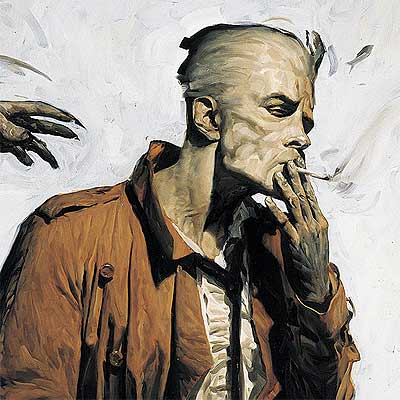Over the past decade, you may have noticed more and more articles referring to "hominins" rather than "hominids." Just why are Homo sapiensand her ancestors now called hominins? The answer isn't just semantic — it has to do with a revolution in the way evolutionary biologists perceive humans' place in the tree of life.
First, let's be clear. Scientists today call humans and our ancestorshominins. They call humans, chimps, orangutans and gorillas hominids. But hominids used to be a humans-only thing. Why are we letting apes into our human clubhouse?
The trouble with taxonomy
The hominin vs. hominid debate grew out of disruptions to the "taxonomic nomenclature" that scientists use to define species and their relationships to one another — taxonomic names for species are those Latinate terms you see like Homo sapiens (human) or Drosophila melanogaster (fruitfly). This complex system dates back to the work of 18th century naturalist Carolus Linnaeus, who first proposed the idea that every living creature could be classified using a hierarchical system, and placed relative to each other on a "tree of life."
Over the next few centuries, scientists refined the basic classifications that Linnaeus proposed, from animals vs. plants to humans vs. chimps, trying to categorize every known species. The rules for how species can be categorized are maintained by a few professional organizations, and each time a scientist discovers a new species it must be fitted into existing rules as logically as possible.
Humans today are the species Sapiens, the genus Homo, the subfamily Homininae, the family Hominidae, the order Primates, the class Mammalia, and the kingdom Animalia. There are a lot of other classifications in between genus and kingdom as well, and that's where the hominid/hominin confusion comes in. You see, humans used to have the genus Homo all to themselves — until new discoveries about chimps and gorillas changed everything.
You are not the only hominid on Earth
Until roughly the 1980s, most scientists believed that humans were so different than apes that we and our direct ancestors (like Austrolopithecus) should have our own family, Hominidae. Great apes, including chimps, gorillas, and orangutans, were grouped into the family Pongidae. This was the great era of humans and our direct ancestors being called "hominids." The term was a shorter, peppier version of Hominidae, a subfamily that included only us.
Here is what our local branches on the tree of life looked in the good old hominid days.
But then anthropologists began to find more and more evidence that chimps and gorillas had actually diverged from orangutans on the evolutionary tree before they diverged from humans. That meant that the tree of life needed to show more of a relationship between humans, chimps, and gorillas than it had before. And so zoologists began to use a more complicated structure.
Now Hominidae includes humans as well as our close ape relatives, chimps, orangutans, and gorillas. Just for good measure, we've added a new subfamily, Homininae (humans, gorillas, chimps), a "tribe" called Hominini (humans, chimps), and even a "subtribe" called Hominina just for humans and our ancestors.
Yes, this is a bit confusing — especially because scientists squabbled over whether this new taxonomy was correct or not until the early 2000s whengenome sequences of humans and chimps revealed that our two species share a 98% genetic similarity. That mostly sealed the deal, and the days when humans could call ourselves the only hominids on Earth came to an end.
To reflect these changes in our understanding of evolution, we now call humans, chimps, gorillas, orangutans (and our extinct ancestors) "hominids" for short; humans and our ancestors are called "hominins" for short (even though you'd think that hominin would also apply to the others in the Homininae subfamily, but whatever).
Why it all changed
The shift from hominid to hominin sounds small but represents a radical change in our perspective on what it means to be human. In older versions of the tree of life, humans were considered so unique and special that we were given our own family, as well as our own genus and species. Though evolutionary theory had knocked us off our high horse in some ways, proving that we were once grubby monkeys, taxonomies continued to reflect the idea that humans were a lot more than apes. We weren't even in the same family!
But in the 1960s and 70s, this notion began to seem absurd to a lot of scientists. Based on what we knew of the great apes, as well as our close evolutionary relationship with them, it started to seem like the old taxonomy was just a way of trying to de-ape-ify our heritage. With help from genetics, human scientists gradually realized that you can't evolve from a common ancestor with apes and then pretend that you aren't sharing a family with them. But if you need to keep the apes out of our evolutionary cubby hole, the new taxonomic classifications still give us the term hominin.
What's changed is our relationship to the animal world. The new taxonomic definition of hominid reminds us that we are far less removed from our ape cousins than all our fancy cities and science might suggest.
While the term hominin caught on among scientists, it still hasn't made much headway with the general public. From this Google Trends chart [click to enlarge] you can see that, at least from the perspective of Google searches, the term hominin really started to catch on in 2008. And the term hominid is in decline (though admittedly this decline could have as much to do with waning interest in the game Alien Hominid as it does changing uses of the term in evolutionary biology). Still, it's clear that many more people are aware of the term "hominin" than they were even ten years ago. Perhaps without realizing it, we are participating in a transformation of what it means to be human.















No comments:
Post a Comment